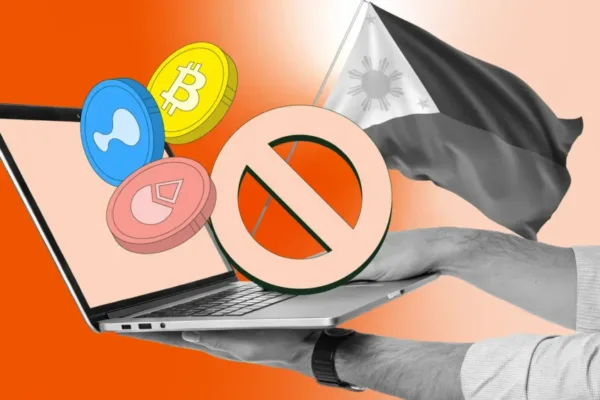by Bhea Baarde, Correspondent
Starting next year, financial institutions will be required to digitalize the majority of their payment options and financial services as part of the Bangko Sentral ng Pilipinas (BSP)’s Digital Transformation Roadmap, which aims to promote financial inclusion and digitalization of payments in the country.

Of all the financial service providers here in the country, I believe that e-wallets, also known as “mobile wallets,” could certainly become one of the BSP’s best bets to achieve this goal.
In the 2022 Consumer Payment Attitudes Study conducted by VISA, an American multinational financial services corporation and a world leader in digital payments, it was revealed that mobile wallets rank first among all digital payment methods in the Philippines at 64%. It was followed by card online (52%), and swipe/insert card (44%).
As an e-wallet user myself, I am one of those who love using it more than other cashless payment options out there.
Here are six reasons why digital payments using e-wallets appeal to Filipinos:
1) Getting an e-wallet is easier and cheaper
Back when e-wallets were not yet as popular as they are now, physical banks were my go-to options for paying bills. But opening a bank account requires a lot of time and effort.
First, I would have to clear my schedule because most banks are only available on weekdays. Then there’s the commute because you have to be physically present to open an account. And once there, I would still need to wait in long queues. I also have to think about the documents that I need to submit and consider what will suit my financial capacity because of factors like maintaining balance.
The money, time and effort to open a bank account are already a challenge for most Filipinos.
Thanks to e-wallets, I never have to deal with all of these. All I need is my mobile phone and a stable internet connection. Moreover, e-wallet giants GCash and PayMaya only require one (1) valid ID to verify or upgrade my account. I also don’t have to worry about keeping within my tight budget because these two e-wallets do not require maintaining balance.
2) Practically everyone now uses e-wallets
Earlier this year, GCash announced that they now have over 60 million registered users. PayMaya, on the other hand, already has 47 million. With millions of Filipinos now using e-wallets, transactions using these platforms are becoming more common than ever in the country.
Nowadays, I have become accustomed to people asking for my e-wallet rather than my traditional bank account details to wire money.
3) Paying bills is made more convenient
Most e-wallet providers in the Philippines offer an in-app settlement of essential bills like electricity and water, which helps free us from the hassles of over-the-counter payment transactions. Since fares have increased due to oil price hikes, paying bills through my e-wallet has lessened my need to commute, and this has helped me save some money in return.
4) There are a lot of perks when shopping online
In a PSA survey published in 2021, it was revealed that 68% or 2 out of 3 Filipino online shoppers prefer using e-wallets as a mode of payment for their transactions. In line with this study, the two leading online shopping platforms in the Philippines, Lazada and Shopee, have embraced digital payments by launching their own e-wallets through the Lazada Wallet and ShopeePay.
If you are just like me, who is an online shopaholic, you might have noticed that more promos are being offered when you choose to pay using e-wallets. These offers include bigger discounts, cash-backs, and more free shipping vouchers.
5) E-wallets offer a variety of financial services
Aside from paying bills, e-wallets allow me to access a variety of financial services.
You can save, invest, loan, or buy an insurance plan. Some deals even offer cryptocurrency, all in one app.
In a way, e-wallets serve not just as a money keeper for me but also as my handy mini-bank. I can access it anytime, anywhere and all with just a few taps on my phone screen.
6) More establishments now accept e-wallets
As we enter the post-pandemic era, establishments are also starting to open their doors once again. Whenever I go out, I notice that more shops, restaurants, and other physical stores have QR codes on their counters. These QR codes are scanned by customers if they want to pay using their e-wallets.
In 2019, SM Group, a conglomerate company and owner of the biggest chain of malls in the Philippines, have announced its universal acceptance of GrabPay, the e-wallet brand of transportation company Grab, in all of their stores.
Just last year, GCash was added to their digital payment portfolio for SM Market, the country’s leading food retailer and the mother brand of SM Supermarket, SM Hypermarket, and Savemore Market.
With a more widespread acceptance of the use of e-wallets for payment, I no longer have to worry anymore about bringing a large amount of cash. This contactless method also helps me keep my money safe while I shop offline.
Although the pandemic situation has eased, it is not yet totally over.
Final Thoughts
Overall, e-wallets receive a warm acceptance in the Philippines because of their ability to provide easier, low-cost, and at the same time safer financial services. E-wallets’ less intimidating qualities are perfect starters for unbanked and underserved Filipinos, the prinary targets of the BSP’s roadmap.
If you don’t have an e-wallet yet, now is the time to have one. To help you get started, I am sharing this article to help you find an e-wallet that best suits you and your needs: What is an e-wallet, how does it work, and what it can do for your business?
So what are you waiting for? Start now, and be a part of the Philippines’ move toward a cashless society!







